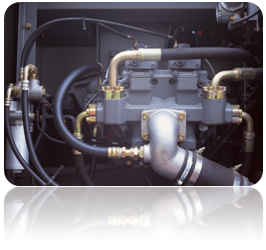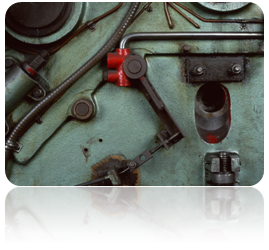Summary of Certification Content
1. Mechanical definition
2. Instruction Background and Instruction Category
3. Instructions and Electrical Systems
4. Which product does not fall within the scope of the Machinery Directive?
5. What does hazardous machinery include?

1. Mechanical definition:
According to the instructions (Article 1.2), any combination composed of components. At least a portion of it is moved through appropriate actuators, controllers, or circuits for the purpose of raw material processing, handling, transportation, or packaging, all referred to as 'machinery'.
The term 'machinery' also includes a group of machines arranged and controlled to achieve comprehensive functions such as raw material processing, processing, transportation, packaging, etc.
In addition, some components that ensure safety in use, and if this component fails, it will endanger the safety or health of personnel exposed to it, also belong to the broad scope of machinery covered by this directive.
Starting from January 1, 1995, mechanical equipment sold to member states of the European Union (EU) must be compulsorily labeled with the CE mark in order to be legally sold, otherwise it will not be allowed to enter its market. The current Machinery Directive (98/37/EC, issued in the Official Journal of the European Union on July 23, 1998) replaces the 89/392/EEC issued in 1989 and subsequent revised directives 91/368/EEC, 93/44/EEC, and 93/63/EEC.

2. Instruction background and category:
2.1 Command Background:
Starting from January 1, 1995, mechanical equipment sold to member states of the European Union (EU) must be compulsorily labeled with the CE mark in order to be legally sold, otherwise it will not be allowed to enter its market.
2.2 Instruction scope:
The Machinery Directive consists of 4 chapters, 16 articles, and 9 attachments, applicable to mechanisms, mobile machinery, mechanical devices, machines used for lifting and transporting people, and safety accessories. The basic health and safety requirements (EHSR) stipulated in regulations cover the entire field of mechanical engineering, which is an extremely important aspect of industrial society.
3. Instructions and Electrical Systems:
As mentioned earlier, in addition to formulating various product safety directives, the EU has also issued many different product safety standards. Some are suitable for a specific product, while others are general evaluation rules applicable to multiple products. In terms of mechanical directives, they can be roughly divided into the following types of standards:
Type A standard (basic safety standard): provides basic concepts, design principles, and general conditions applicable to all machines.
For example:
EN 292-1: Basic concepts and general design principles of mechanical safety standards
Part 1: Basic Terminology and Methods EN 292-2: Basic Concepts and General Design Principles of Mechanical Safety Standards
Part 2: Technical Principles and Instructions
EN 1050: Safety of Machinery - Principles of Hazard Assessment
B-type standard (group safety standard): deals with a safety situation or a related safety facility, which can be widely used in various machinery:
B1 standard: for specific safety situations (such as safety distance, surface temperature, noise)
For example:
EN 294: Safety of machinery - Safety distances to prevent upper limbs from reaching dangerous areas
EN 811: Safety of machinery - Safety distances to prevent lower limbs from reaching dangerous areas
B2 type standard: for relevant safety facilities (such as two-handed control, interlocking devices, pressure sensing devices, shields)
EN 1088: Safety of machinery - Interlocking devices with/without shield locking - General principles and regulations for design
EN 953: Safety of machinery - General specifications for the design and construction of protective covers (fixed/movable)
Type C standard (machine safety standard): Provide detailed safety requirements for specific machines or machine groups.
For example:
EN 201: Safety requirements for plastic/rubber injection molding machines
EN 692: Safety requirements for mechanical presses
EN 693: Safety requirements for hydraulic presses
EN 860: Safety requirements for single sided planers
EN 869: Safety requirements for metal casting machines
EN 982: Safety requirements for oil pressure systems
EN 983: Safety requirements for pneumatic systems
PrEN 1493: Safety requirements for automotive lifting platforms
EN 12415: Safety requirements for small lathes
EN 12417: Safety requirements for integrated processing machines
EN 12478: Safety requirements for large lathes
EN 12717: Safety requirements for drilling machines
4. Which product does not fall within the scope of the Machinery Directive?
According to the provisions of the directive, the following machinery is not within the scope of this directive
1. Design and manufacture lifting and/or transportation equipment for carrying passengers, regardless of load, except for industrial trucks equipped with lifting operators.
2. Machinery that relies solely on human power as direct power, unless used for stacking goods.
3. Medical machinery in direct contact with patients.
4. Special equipment for outdoor squares or amusement parks.
5. Steam boilers, tanks, and pressure vessels.
6. Machinery specially designed or applied for nuclear energy purposes, which may result in the leakage of radiation energy in the event of an unexpected event.
7. Radioactive components form a part of the machine.
8. Light weapons
9. Storage tanks and transportation pipelines for gasoline, diesel, flammable liquids, and hazardous materials.
10. Transportation vehicles: refer to transportation vehicles and their trailers that transport people and/or goods through public transportation networks such as highways, railways, waterways, and in the air, all of which should be considered as transportation vehicles. However, transportation vehicles used in the mining industry are included in this directive.
11. Ships and offshore mobile equipment equipped with relevant equipment.
12. Cable cars for public or private transportation, used for carrying people, and cable cars pulled by ropes.
13. Agricultural and forest traction machines.
14. Machines specially designed and manufactured for military or police use.
15. A lift that is permanently used in a building or building within a specific height range.
5. What does hazardous machinery include?
The 392 directive has a clear distinction between general machinery and machinery considered particularly dangerous. The following are the 'hazardous machinery' listed in the Machinery Directive:
A. Mechanical
1. Single or multi blade circular saw machines for processing wood and similar materials or processing meat and similar materials.
1.1 A sawing machine with fixed or cutting tools during operation, with a fixed bed for manual feeding or a detachable power feed device.
A sawing machine with fixed cutting tools during operation, using a reciprocating motion sawing workbench or bracket with manual operation.
The sawing machine with fixed cutting tools during operation adopts a built-in working feed device and manual loading and unloading.
1.4 Sawing machines with mobile cutting tools during operation use mechanical feeding devices and manual loading and unloading.
2. Hand escorted planer
3. Manual loading and unloading of raw materials using single sided planing.
4. A band saw machine that processes wood and similar materials or meat and similar materials using fixed or mobile bed platforms and mobile supports, and manually loads and unloads materials.
5. Composite machinery composed of machinery for processing wood and similar materials mentioned in points 1-4 and 7.
6. Hand fed multi tool clamping head wood working tenoning machine.
7. Vertical shaft particle shaper for processing wood and similar materials.
8. Portable chain saws for woodworking.
9. Stamping machines used for manual loading and unloading of metal for cold working, including folding machines, have a working stroke exceeding 6mm and a speed exceeding 30mm per second.
10. A plastic injection or compression molding machine with manual loading and unloading.
11. A rubber injection or compression molding machine with manual loading and unloading.
12. The following underground engineering machinery and equipment:
- Machinery on the track: power locomotive and braking vehicle,
- Hydraulic tunnel top support equipment,
- Internal combustion engines used in underground engineering machinery.
13. Trucks equipped with compression machinery and manually collecting and loading household waste.
14. Protective equipment and detachable transmission shaft for the directional joint mentioned in section 3.4.7 of Annex 1.
15. Maintenance of vehicle jacking machines.
16. Including personnel lifting devices that may fall from a vertical height of more than three meters.
17. Machinery for manufacturing fireworks.
B. Security Parts Group
1. An electric induction device specially designed to detect personnel and ensure their safety. (Invisible barriers, induction pads, electromagnetic detectors, etc.)
2. The logic unit of the two handed controller to ensure safety.
3. Automatically movable protective screens for machinery mentioned in Articles 9, 10, and 11.
4. Rollover Protective Structure (ROPS).
5. Falling Object Protection Structure (FOPS).
Attention: The hazardous machinery listed above generally requires the notified body to carry out EC type inspection on the product before the CE mark can be affixed to the product.